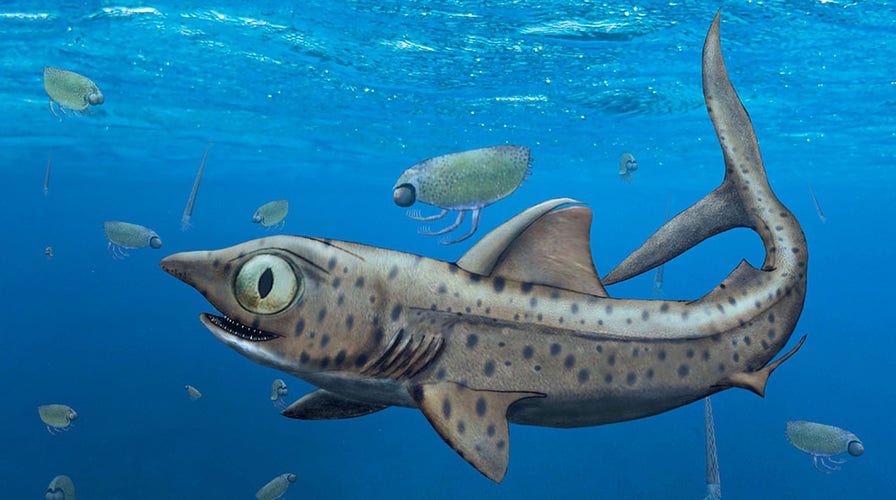Fox News Flash top headlines for November 24
Fox News Flash top headlines are here. Check out what's clicking on Foxnews.com.
A newly discovered shark that lived 370 million years ago had some of its teeth hidden from its prey until they clamped down, according to a new study.
The research, published in Communications Biology, notes that Ferromirum oukherbouchi, a bizarre-looking shark with large eyes and a short snout, had a jaw that actually rotated to allow for the shark's newer teeth to gnash at its prey's flesh.
“Through this rotation, the younger, larger and sharper teeth, which usually pointed toward the inside of the mouth, were brought into an upright position," the study's lead author, Linda Frey, said in a statement. "This made it easier for animals to impale their prey. Through an inward rotation, the teeth then pushed the prey deeper into the buccal space when the jaws closed.”

With mouths closed, the older, smaller teeth of the ancestors of today’s sharks stood upright on the jaw, while the younger and larger teeth pointed towards the tongue and were thus invisible when the mouth was closed. (Credit: Christian Klug, UZH)
400M-YEAR-OLD 'ARMORED' FISH MAY CHANGE THE HISTORY OF SHARKS AS WE KNOW IT
In addition to its strange jaw, F. oukherbouchi was smaller than most modern-day sharks, measuring just 13 inches long, the researchers discovered via its well-preserved jaws.
This allowed for the sharks to not only use their larger, inward-facing teeth but also use something known as suction-feeding.
“In combination with the outward movement, the opening of the jaws causes sea water to rush into the oral cavity, while closing them results in a mechanical pull that entraps and immobilizes the prey," Frey added.
MEGALODON DISCOVERY: SCIENTISTS REVEAL GIANT SHARK'S ASTONISHING SIZE
The feature increasingly became irrelevant as time went on and was eventually replaced by the jaw structure that sharks and rays have had for millions of years.
“The excellently preserved fossil we’ve examined is a unique specimen,” study co-author Christian Klug explained, adding that the type of jaw joint seen in this shark may have played "an important role" in the Paleozoic era.

